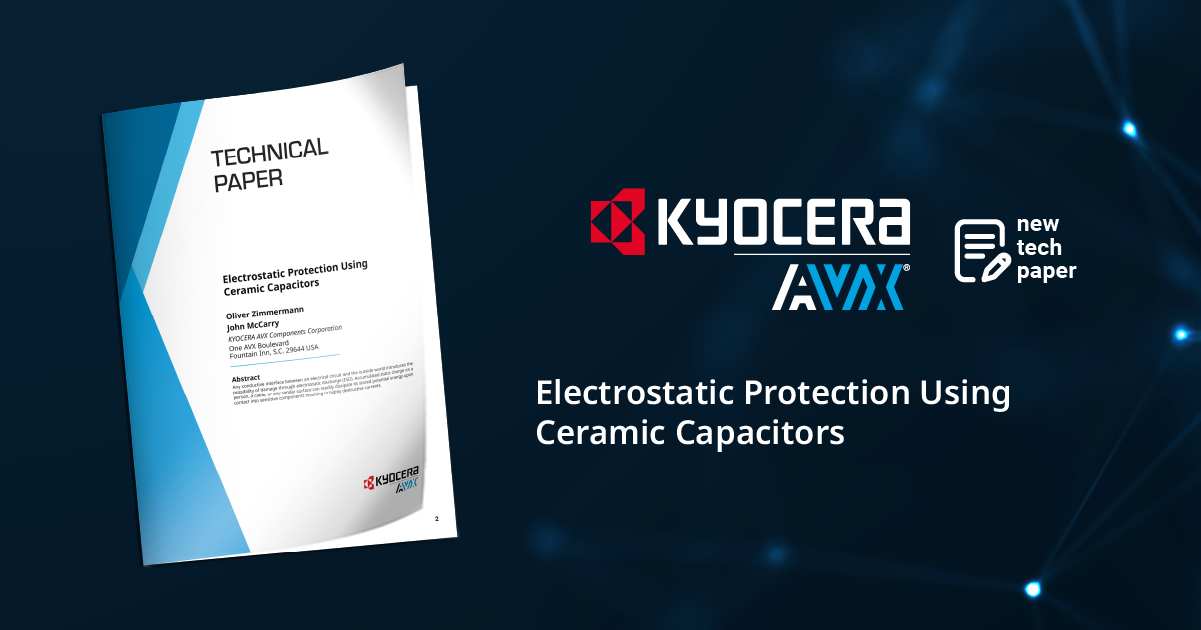Electrostatic Protection Using Ceramic Capacitors
Written By: Oliver Zimmermann | John McCarry
Abstract:
Any conductive interface between an electrical circuit and the outside world introduces the possibility of damage through electrostatic discharge (ESD). Accumulated static charge on a person, a cable, or any similar surface can readily dissipate its stored potential energy upon contact into sensitive components resulting in highly destructive currents.
Ideally, varistors and TVS diodes only activate to protect the circuit when a high voltage is present and impart no parasitic effects during normal operation. For high-speed data lines, in particular, it is critical that the protection device introduce as little capacitance as possible (Electronic Design). TVS diodes and varistors are therefore specified not only by their voltage ratings, but also by their capacitance, leakage current, and package options.
Traditional protection devices include a myriad of different varistors and transient voltage suppression (TVS) diodes. Both operate on the principle of shunting current to ground when the applied voltage exceeds a clamping threshold as shown in figure 1.
DOWNLOAD TECHNICAL PAPER
Any conductive interface between an electrical circuit and the outside world introduces the possibility of damage through electrostatic discharge (ESD). Accumulated static charge on a person, a cable, or any similar surface can readily dissipate its stored potential energy upon contact into sensitive components resulting in highly destructive currents.
Ideally, varistors and TVS diodes only activate to protect the circuit when a high voltage is present and impart no parasitic effects during normal operation. For high-speed data lines, in particular, it is critical that the protection device introduce as little capacitance as possible (Electronic Design). TVS diodes and varistors are therefore specified not only by their voltage ratings, but also by their capacitance, leakage current, and package options.
Traditional protection devices include a myriad of different varistors and transient voltage suppression (TVS) diodes. Both operate on the principle of shunting current to ground when the applied voltage exceeds a clamping threshold as shown in figure 1.


